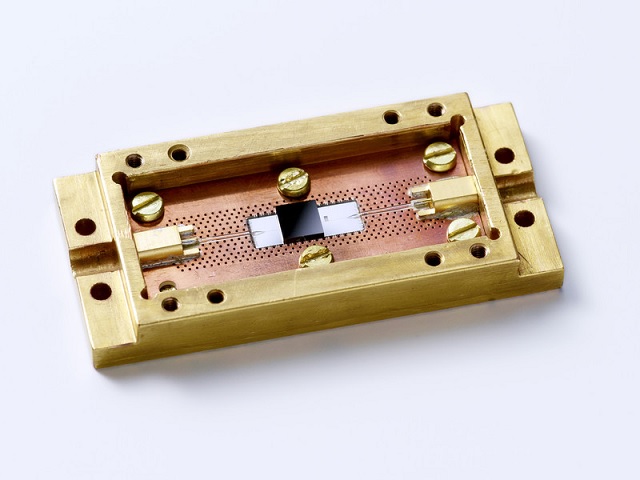 The quantum system studied at TU Wien (Vienna): a black diamond (center) contains nitrogen atoms, which are coupled to a microwave resonator. (Credit: TU Wien)
The quantum system studied at TU Wien (Vienna): a black diamond (center) contains nitrogen atoms, which are coupled to a microwave resonator. (Credit: TU Wien)
Researchers at the Vienna University of Technology have successfully improved the stability of a quantum system using a cavity protection effect.
The electronics currently used in computers allows the value of a state to be stored as either zero or one – a binary system. Quantum systems can exist in many states at once, or a superposition of both zero and one, which allows the possibility of quantum computers to be far more powerful in the future.
However, before quantum computers become a regular part of our everyday lives, several obstacles must first be overcome. Quantum states are very quickly destroyed by interactions with their environment which causes them to fall into a defined state rather than storing information as a superposition of states.
Quantum computing, the story of a wild idea: Andris Ambainis at TEDxRiga 2013
Video sourced from YouTube - TEDx Talks
New research at the Vienna University of Technology, using a hybrid system of two totally different quantum technologies has succeeded in improving the stability of a promising quantum system.
The research team has explored and constructed a new class of quantum memory by coupling atoms and microwaves. A theoretical model was developed by theorists in order to explain the complex dynamics involved in these hybrid quantum systems.
In this system, photons are generated in a microwave resonator. These photons are forced to react with the spin of nitrogen atoms, which are built into a diamond.
Quantum information can be quickly transmitted using the microwave resonator and can be stored by the atomic spins in the diamond for no less than several hundred nanoseconds. This duration is comparatively longer than the time scale on which photon movement in the microwave resonator is based.
"All nitrogen atoms are completely identical. But when they are placed in slightly different surroundings, they have slightly different transition frequencies."
Stefan Putz, PhD-student at Vienna University of Technology.
The atomic spins can be thought of as a room full of pendulum clocks. At first they will have a produce synchronised oscillations but will lose their rhythm over time, causing random noise.
Although there is no direct interaction between the atomic spins, due to the fact that they are collectively coupled to the microwave resonator, this stops them to from reaching a state in which they are not useful for processing quantum information.
This protection effect significantly increases the period during which it is possible to read quantum information from the atomic spins. The improvement of quantum coherence time using this cavity protection effect could pave way to use the hybrid quantum system for many promising applications in the future and bring commercial quantum computers one step closer.